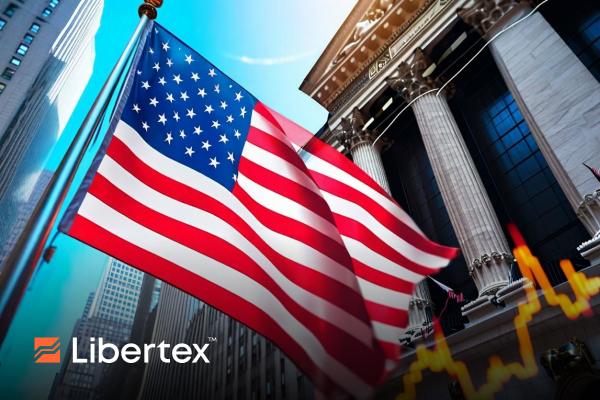Dubbed "Liberation Day" by Donald Trump, 2 April was a dark day for US stocks. It appeared that one of the longest bull markets in history was about to be ended not as a result of runaway inflation or supply-side pressure but rather by a policy of the country's own government. The tariffs imposed were comprehensive in scope and reached up to triple digits for some nations, with China famously being hit with 145% levies at one point. The S&P 500 and Nasdaq 100 lost between 10% and 15% in a single trading week between 1 and 4 April. But what seemed like a devastating blow to equities was soon forgotten, and now both the S&P 500 and Nasdaq 100 have risen above their pre-tariff 1 April levels, gaining more than 10% on the monthly chart to reach 5,892.58 and 21,319.21, respectively.
The reasons for the turnaround are multiple, from progress on trade and peace deals around the world following milestone meetings in Geneva and Istanbul to shifting monetary policy expectations at home. However, the triple threat of higher prices, job uncertainty, and falling national wealth could continue to pose problems for risk assets like stocks. In this article, we'll attempt to weigh up these key factors affecting equities in a bid to provide some insight on where the markets could be headed in H2 2025.
Fed up with waiting
When the US Federal Reserve met last Wednesday, 7 May, it chose for a third consecutive time to keep interest rates unchanged at 4.3%, despite significant pressure from Trump to lower borrowing costs. Ever since the end of double-digit inflation two years ago, the markets have been itching for a full shift back to the monetary policy of the past decade, but Powell has remained cautious amid the uncertainty of trade wars and geopolitical conflicts. While it's hard to argue that US stocks have been stagnating, a rate cut could be just what is needed to sustain one of the longest bull cycles in history.
As many predicted, the US economy contracted by 0.3% during the first quarter as a surge in hurried pre-tariff-deadline imports weighed on growth. However rational the explanation for it, the spectre of recession still looms large, and Powell will feel obligated to do everything in his power to avoid a second quarter of negative growth in the summer. Indeed, President Trump has already claimed that the "Fed must lower the rate", citing lower prices for consumer staples and stating that delaying the cut is "not fair to America". Meanwhile, the latest labour market data show that private employers added just 62,000 jobs in April, exactly half the forecast gain of 124,000. One can't help but feel that the below-target performance of both the economy and the jobs market will put additional macroeconomic pressure on Powell to cut rates in June.
However, the CME's FedWatch tool only predicts the likelihood of a reduction in June to be 10%, though this could soon change if more major trade deals are formalised by then. The positive impact of a rate cut on stocks would be especially powerful given the current low probability and generally strong performance, even without such a well-known catalyst for growth as dovish monetary policy.
Global village
Trump's trade war was nothing short of unprecedented in the modern age, but as usual, it seems as though the President's tariffs were more of a negotiation tactic than a serious proposition. Following landmark talks in Geneva last weekend, the US has agreed to cut duties on Chinese products from over 100% to 30%, while China's reciprocal tariffs on US imports will fall to just 10%. Both countries cited the importance of a "sustainable, long-term, and mutually beneficial economic and trade relationship" while China has pledged to "suspend or cancel" other non-tariff measures against the US.
Immediately following the news, the Nasdaq Composite shot up 4.3% on Monday, 12 May, while the Mag Seven tech stocks have risen to more than 20% over their April low this week. Peace talks in Istanbul and Qatar during the week ending on 18 May also come as a positive development for markets, with negotiated settlements to two of the biggest regional conflicts in recent memory likely to spark renewed investment in both Europe and the Middle East. This comes after the US and UK announced an historic trade deal between the two fraternal nations that will see limited tariff-free trade of a variety of items from beef and automobiles to steel and minerals.
While nothing has yet been announced, it is also rumoured that a US-Indian deal is close to completion. The new Canadian Prime Minister, Matt Carney, has surprisingly opted to avoid retaliatory measures and keep tariffs on US imports "near zero", which could mean that a deal is on the cards before the 90-day moratorium expires on the US side. This will naturally result in a boom of international trade, with US companies likely to benefit most from more favourable terms.
Trade stocks and more CFDs with Libertex
With Libertex, you can trade in a wide range of CFDs, including stocks, indices and ETFs, all the way through to metals, energy and even crypto. Choose from major indices like the S&P 500, Nasdaq 100 or Dow Jones Industrial Average, as well as a range of individual stocks. For more information or to create an account of your own, visit www.libertex.com/signup today!


